How to build an effective omnichannel marketing strategy: A step-by-step guide
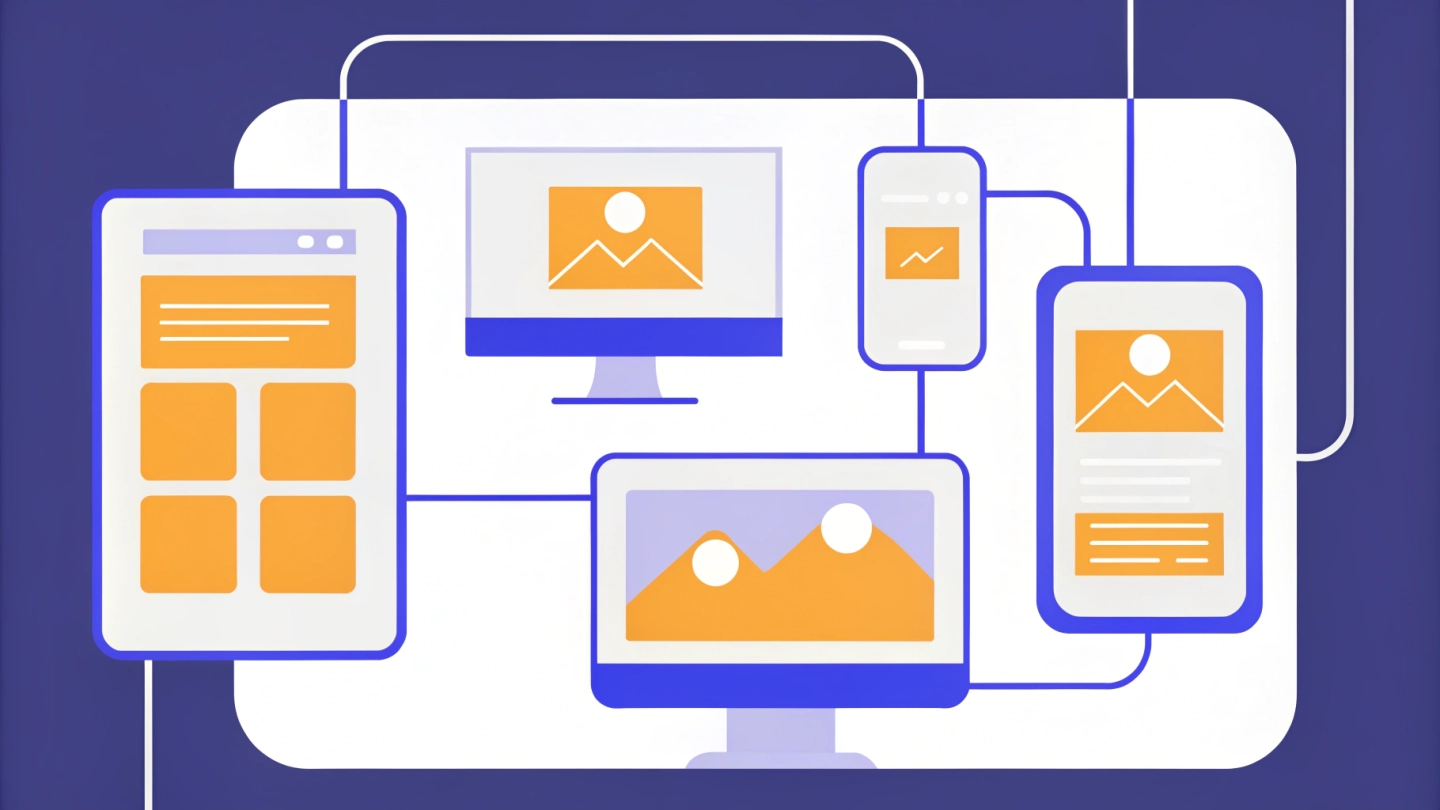
Introduction
In the modern marketplace, the ability to provide a cohesive customer experience across multiple channels is more critical than ever. Omnichannel marketing emerges as a strategic approach that integrates both online and offline interactions, ensuring that customers receive consistent messaging regardless of how they engage with a brand.
With consumer behavior evolving rapidly — evidenced by the significant percentage of shoppers who utilize smartphones while in-store — businesses must adapt to meet these expectations. This article delves into the definition and importance of omnichannel marketing, explores its key differences from multichannel strategies, and highlights the numerous benefits that come with its implementation.
Additionally, a step-by-step guide will be provided to aid companies in building a robust omnichannel strategy, supported by essential tools and technologies to enhance marketing efforts. As competition intensifies, understanding and effectively executing an omnichannel approach is imperative for driving customer satisfaction and loyalty.
Understanding omnichannel marketing: Definition and importance
In today’s marketplace, you can’t afford to treat channels like separate islands. Omnichannel promotion is about creating a seamless experience for consumers, whether they’re shopping online or walking through your store. It’s like orchestrating a symphony where every instrument plays in harmony, ensuring that your messaging and experience are consistent no matter where the customer engages.
Why does this matter? Well, consider this:
- 60% of consumers are more inclined to make an online purchase if they know they can return it in-store.
That’s not just a statistic; it’s a clear signal that convenience drives sales. When customers feel they have options, their satisfaction skyrockets, and so does their loyalty.
Now, let’s talk about smartphones. A whopping 72% of shoppers are using their phones while in-store to compare prices or read reviews. This isn’t just a trend; it’s a wake-up call for businesses. If you’re not meeting your customers where they are, you’re missing out. Engaging with them through their preferred channels can lead to higher conversion rates and better sales performance.
But it doesn’t stop there. Content is king at every touchpoint in the customer journey. You need to ensure that your customers receive relevant information and support, guiding them smoothly from one interaction to the next. Take a page from the case study ‘Adopting an Omnichannel Strategy.’ Retailers should implement robust omnichannel strategies and continuously evaluate their effectiveness.
Finally, let’s not overlook the impact of customer experience. According to the Zendesk Report,
- 80% of clients are likely to take their business elsewhere after just one bad experience.
In a world where competition is fierce, maintaining a positive experience across all channels isn’t just nice to have — it’s essential for survival. So, if you want to stay in the game, invest in omnichannel strategies that resonate with your customers and keep them coming back for more.
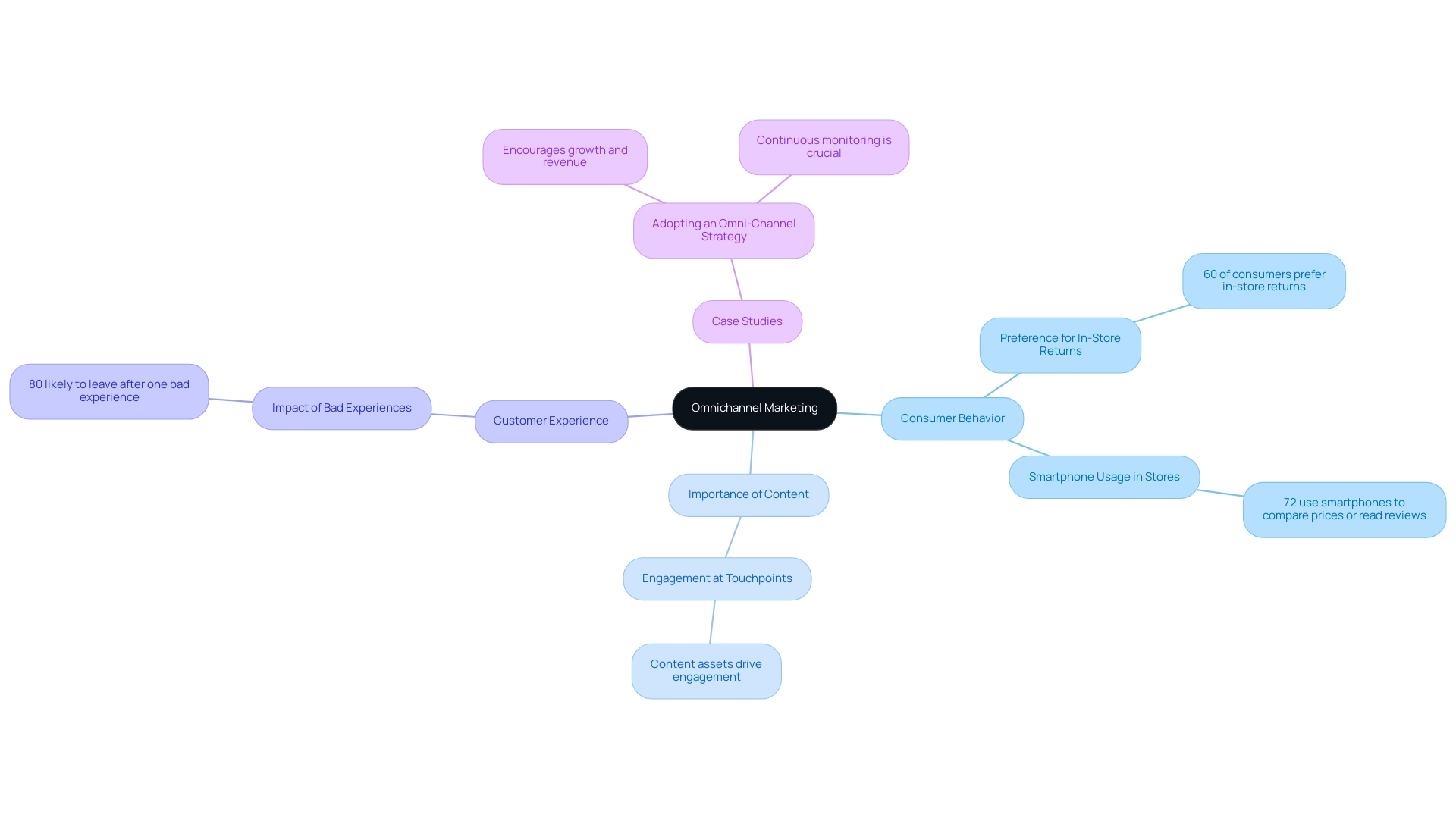
Omnichannel vs. multichannel: Key differences explained
In the world of marketing, you’ve got two main strategies: omnichannel and multiple-channel. They both aim to reach customers across different platforms, but they do it in fundamentally different ways. Think of multiple-channel as a collection of separate roads leading to the same destination. In contrast, omnichannel is like a well-connected highway system, where every road is linked to provide a smooth ride.
Omnichannel promotion ensures that all channels work together. This prevents mixed messages and fragmented customer experiences. When customers can shift seamlessly between touchpoints, their overall experience improves significantly. Research backs this up — campaigns that use three or more channels see an impressive order rate of 0.83%. Compare that to the meager 0.14% from single-channel efforts.
And there’s more. Internal data from Google indicates that an omnichannel strategy can boost store visits by 80%. Customers who engage across various platforms tend to spend 4% more when they do visit. That’s not just good for customer satisfaction; it’s smart business.
Companies that truly embrace omnichannel strategies also benefit financially. They see a 7.5% year-over-year drop in cost per contact. This isn’t just a trend; it’s a shift in how business is done. With 65.1% of back-to-school shopping expected to happen in-store, while online sales grow faster — 7.4% compared to 1.0% for physical stores — omnichannel strategies are becoming essential.
However, there’s a catch. About 45% of marketers believe they lack the talent, technology, and processes needed to pull off effective omnichannel marketing.
The bottom line? A unified promotional approach not only boosts client satisfaction but also strengthens brand loyalty. It’s time to connect those channels and make the most of what omnichannel marketing has to offer.
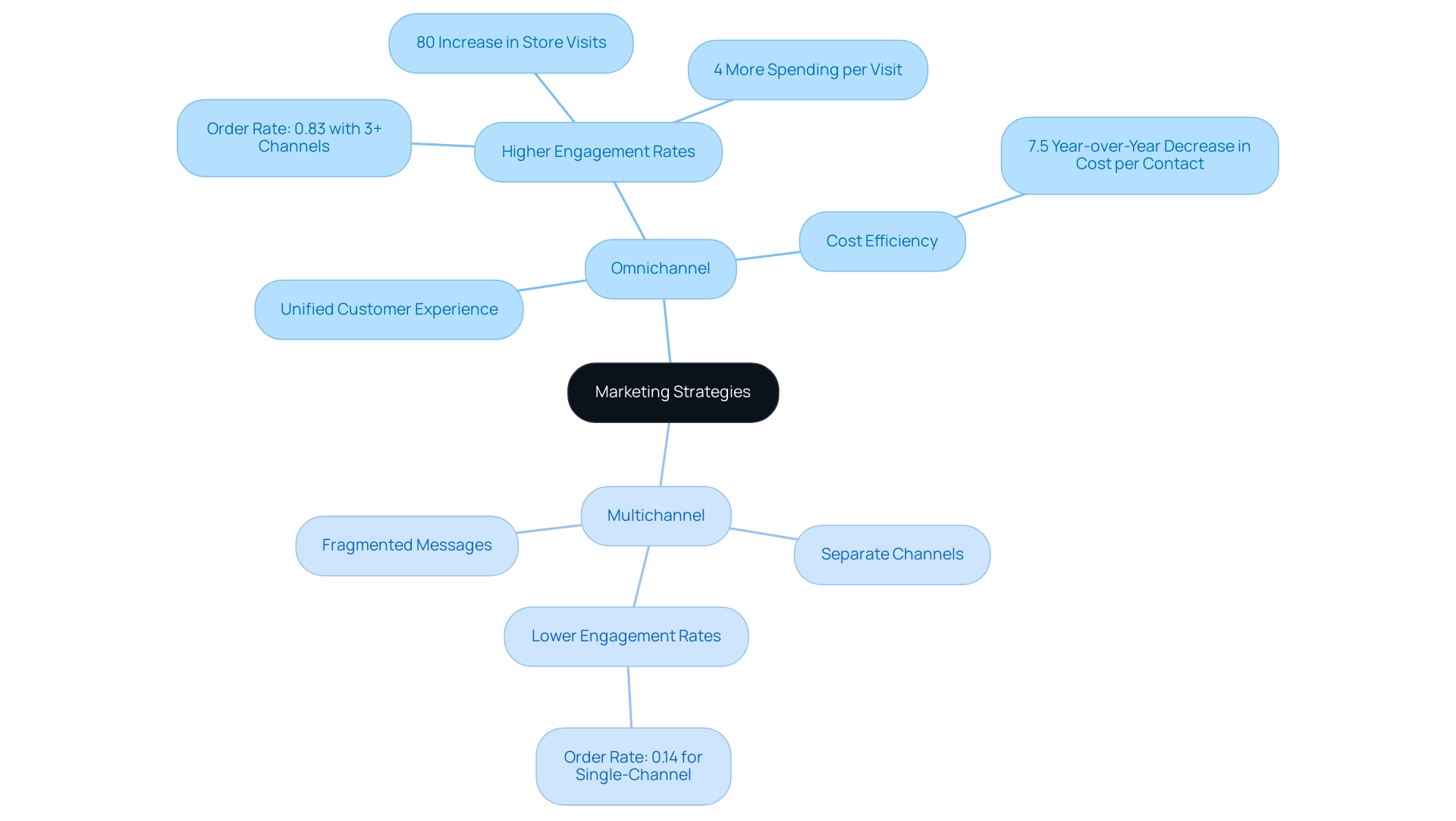
The benefits of an omnichannel marketing strategy
A comprehensive marketing strategy isn’t just a nice-to-have; it’s a game changer. When you engage clients through multiple channels, you’re not just boosting interaction — you’re building stronger brand loyalty and driving up conversion rates. Recent statistics reveal that customers who use multiple channels spend about 4% more in physical stores than those who stick to one method. Why? Because an omnichannel approach delivers consistent and personalized experiences. It’s like having a conversation with someone who knows you well; you’re more likely to trust them and keep coming back.
But it doesn’t stop there. This strategy also enhances your ability to collect and analyze data. Understanding consumer behavior and preferences is crucial. With these insights, businesses can craft targeted marketing campaigns, allocate resources more effectively, and ultimately improve their return on investment (ROI). Consider this: there’s been a 27% increase in people seeking help through direct messages on social media. This isn’t just a trend; it’s a signal that adopting an omnichannel marketing approach is essential for any company that wants to thrive in today’s cutthroat landscape.
And here’s a wake-up call: 27% of shoppers are ready to jump ship if an item isn’t available. That’s a clear indication that effective engagement is no longer optional. The chatbot market is booming and is expected to reach $994 million by the end of 2024. A staggering 84% of companies believe that AI chatbots will be crucial for client engagement. This underscores the importance of integrating technology into your multi-channel strategy. If you want to enhance user experience and keep your customers coming back, now’s the time to act.
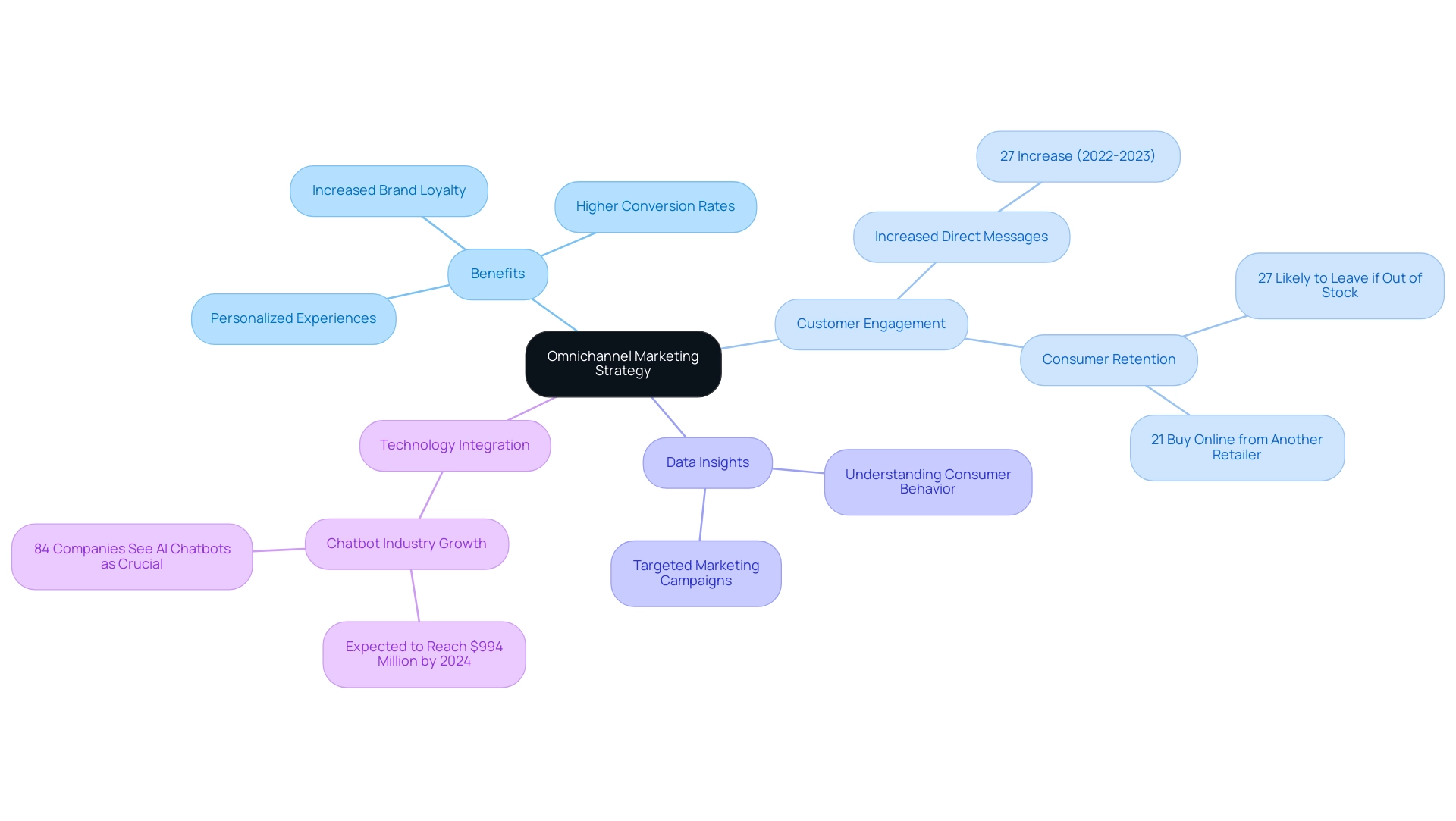
Step-by-step guide to building your omnichannel strategy
Define your objectives clearly when adopting an omnichannel strategy. Here’s the reality: 27% of consumers will jump ship if a product is out of stock. That means client retention should be at the top of your list. Other goals? Think about boosting conversion rates and increasing brand awareness. These objectives will serve as your North Star, guiding your entire strategy.
Know your audience: Dive deep into market research. Understand what your target audience wants, how they behave, and what frustrates them across different channels. Remember, service leaders are all about omnichannel support. Tailor your strategy accordingly.
Map the client journey: Build a detailed journey map that highlights every potential interaction with your brand. Pay attention to the trends — 27% of social media users are now looking for support through direct messages. This shift to digital is real. Between 2022 and 2023, that number jumped by 27%. If you’re not integrating social media into your service strategy, you’re missing the boat.
Integrate your channels: Make sure your marketing channels — social media, email, websites, and physical stores — are all working together. Consistent communication across these platforms is crucial for maintaining client trust and satisfaction. A staggering 79% of service leaders swear by integrated support. Don’t ignore this.
Use data and analytics: Leverage data analytics tools to keep tabs on client interactions and extract actionable insights. This isn’t just a nice-to-have; it’s a necessity for delivering the omnichannel support that service leaders demand.
Test and optimize: Don’t be afraid to experiment. Try different approaches and refine your strategy based on what the metrics tell you. This ongoing process is vital for staying effective and meeting evolving client expectations. Remember, 21% of consumers are ready to buy from a competitor if their needs aren’t met. Stay sharp.
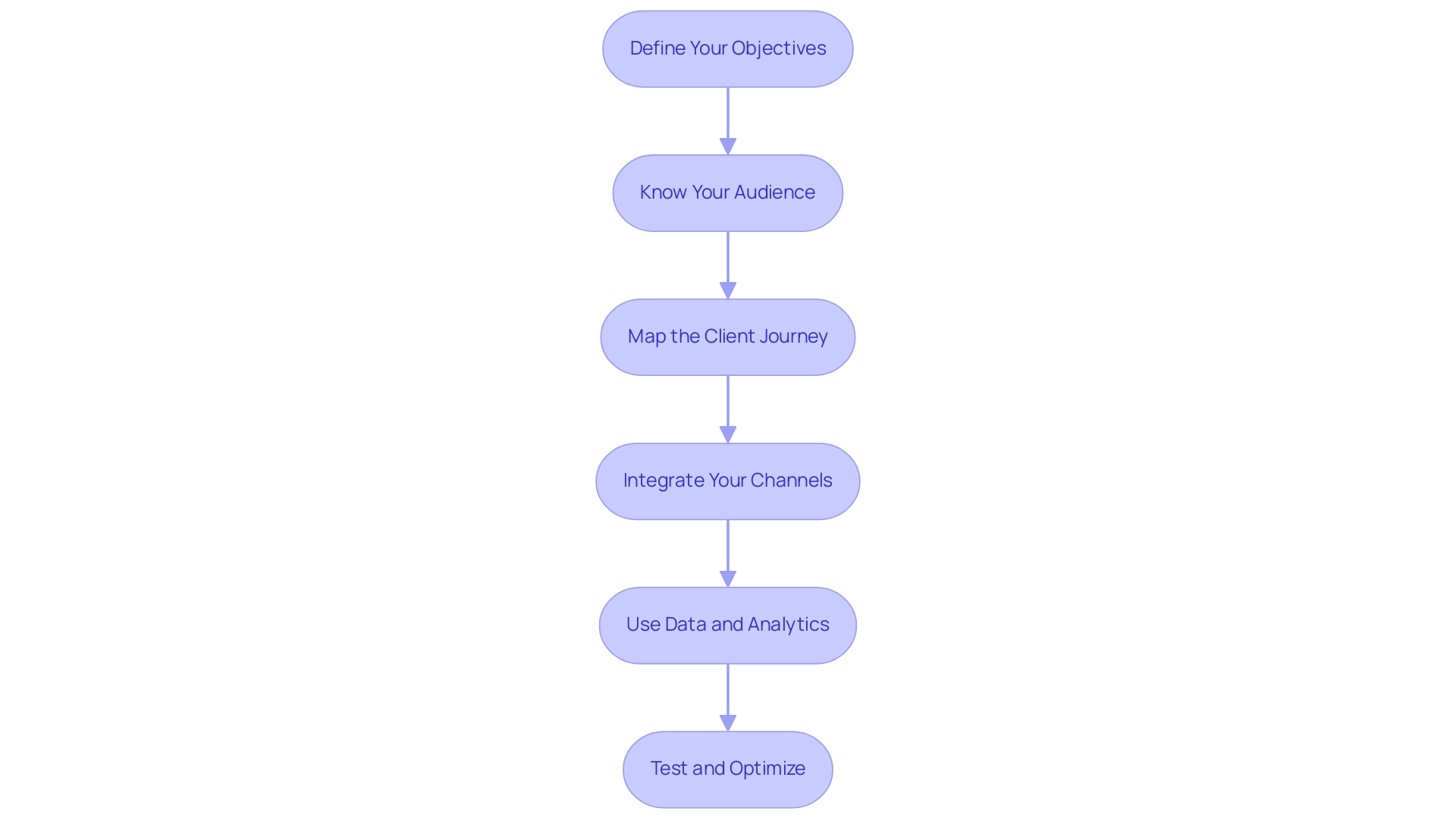
Tools and technologies for effective omnichannel marketing
You want to boost your omnichannel marketing? Let’s get to the essentials. Here are the tools you need to make it happen:
Customer Relationship Management (CRM) software: Think of Dashly and HubSpot as your command center. They help you manage customer data and interactions across all channels. Dashly emphasizes how crucial it is to align your sales and service teams. When they work together, you create a seamless experience for customers as they navigate their buying journey.
Promotion automation platforms: Platforms like Marketo and Mailchimp are your secret weapons for automated campaigns. They let you tailor promotions based on client behaviors, making outreach more efficient and effective.
Analytics tools: Google Analytics and Tableau are your eyes and ears. They provide deep insights into user interactions and campaign performance. Here’s a fact: there was a 27% jump in the use of direct messaging for service on social media from 2022 to 2023. That’s a clear signal that you need solid analytics to keep up with shifting client preferences.
Social media management tools: Hootsuite and Buffer help you manage and analyze social media engagement. They allow you to respond to customer inquiries swiftly and effectively.
Bringing these technologies into your marketing strategy does more than streamline your promotional efforts. It creates a unified consumer experience. Consider this: about 25% of shopping journeys now kick off on price comparison sites instead of traditional channels. The landscape is changing, and you need to adapt.
Take a look at the case study “Understanding Multichannel Platforms.” It illustrates how integrating various client interaction channels leads to a cohesive experience. This is critical for maintaining consistency in client interactions and delivering tailored experiences.
Keep in mind that while tools like Intercom are great for automation, they come with a steeper learning curve. Choose wisely.
By embracing these tools, you can ensure your customer interactions are consistent and personalized. This is the key to succeeding in an omnichannel world.
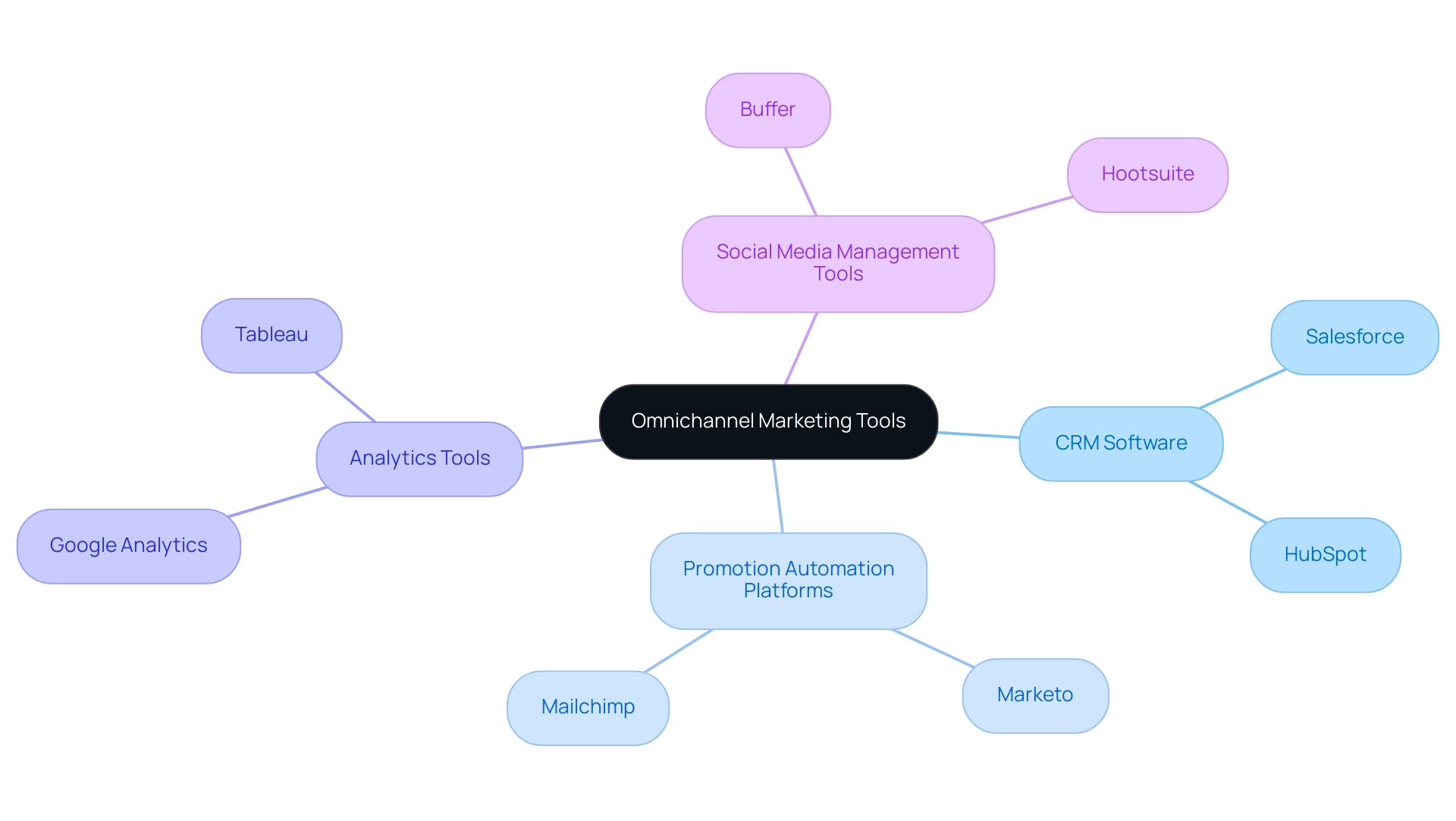
Conclusion
In the rapidly evolving marketplace, the significance of omnichannel marketing cannot be overstated. By providing a seamless and integrated customer experience across multiple channels, businesses can ensure that their messaging is consistent and relevant, ultimately enhancing customer satisfaction and loyalty. The stark difference between omnichannel and multichannel strategies highlights the necessity of an interconnected approach, which enables smoother transitions for customers and fosters deeper engagement.
The benefits of adopting an omnichannel strategy are manifold, including:
- Increased customer spending
- Improved brand loyalty
- Enhanced data-driven insights
As consumer expectations rise, businesses must prioritize the implementation of effective omnichannel strategies to thrive in today’s competitive landscape. The step-by-step guide provided serves as a practical roadmap for organizations looking to build a robust omnichannel presence, emphasizing the importance of:
- Defining objectives
- Understanding the audience
- Leveraging technology
By integrating the right tools and technologies, businesses can streamline their marketing efforts and create a cohesive customer experience. Embracing omnichannel marketing is not merely an option; it is an essential strategy for success in the modern retail environment. Companies that prioritize this approach will not only meet customer expectations but also gain a competitive edge, ultimately driving growth and fostering lasting relationships with their clientele.








![10-step Guide on How to Create a Chatbot for your Website [Build without code]](https://www.dashly.io/blog/wp-content/uploads/2022/06/How-to-create-a-chatbot-to-automate-conversations-with-your-website-visitors-720x317.png)